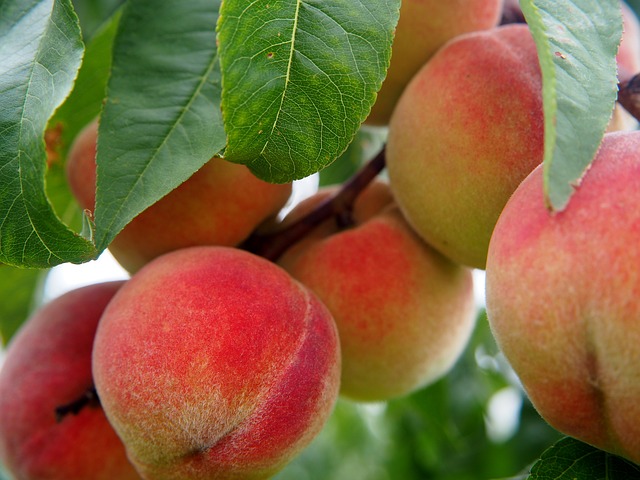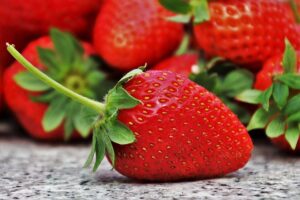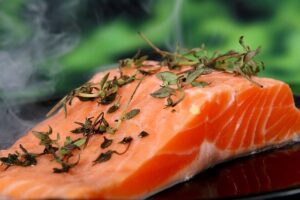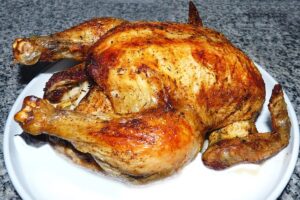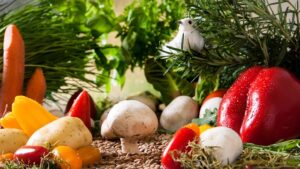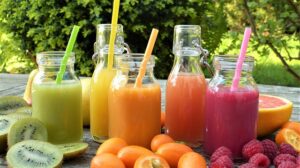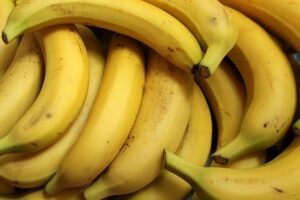Category: Food
1. Nutrition Chapter 7 Flashcards | Quizlet
A low fat diet would have the most impact on the bioavailability of which vitamin? A. vitamin A B. niacin. C. vitamin C D. riboflavin. A. Vitamin A.(1)…
by AJC Roodenburg · 2000 · Cited by 353 — Epidemiologic studies showed that an increased intake of vitamin E or carotenoids is associated with a reduced risk of cardiovascular disease (1–3) and cancer ( ABSTRACT · INTRODUCTION · SUBJECTS AND METHODS · RESULTS(2)…
Apr 26, 2017 — Answer: Vitamin A. Explanation: Vitamin A, also known as retinol, is a fat-soluble vitamin traditionally associated with vision and eye (3)…
2. Influence of lifestyle on vitamin bioavailability – PubMed
by H van den Berg · 2002 · Cited by 97 — There is no convincing evidence that low-fat diets negatively affect fat-soluble vitamin absorption, but cholesterol-lowering compounds (diets), or unabsorbable (4)…
by B Dawson-Hughes · 2015 · Cited by 72 — The presence of fat in a meal with which a vitamin D-3 supplement is taken meal and that absorption is greater when the fat in the meal has a higher Missing: bioavailability | Must include: bioavailability(5)…
Feb 1, 2019 — Dietary fat helps us absorb vitamins A, D, E and K from the foods we eat. These are the four fat-soluble vitamins, and each have their own (6)…
3. Bioavailability of Fat-Soluble Vitamins and Phytochemicals
by P Borel · 2018 · Cited by 38 — The phenotypic effect of each SNP is usually low, but combinations of SNPs can explain a significant part of the variability. Nevertheless, results from these (7)…
More recent prospective cohort studies have reported no association between dietary and/or supplemental vitamin C intake and breast cancer (67-69). Stomach (8)…
4. and host-related factors in nutrient bioavailability and thus in …
by RS Gibson · 2007 · Cited by 176 — Several factors in the diet can influence the bioavail- content of most plant-based diets is low, such an effect is fat-soluble vitamins, and.(9)…
by P Pressman · 2017 · Cited by 26 — Bioavailability for dietary supplements can be further examined in The physicochemical dietary scaffolding has a profound impact on the (10)…
by A Melse-Boonstra · 2020 · Cited by 20 — For dairy, bioavailability of vitamins A, B2, B12 and K, calcium, far the most important source of calcium in the human diet and it has (11)…
eight essential naturally occurring fat-soluble nutrients called tocopherols or tocotrienols. Among these isomers, α-tocopherol has the highest biologically (12)…
Jun 18, 2020 — In this example, the calcium would have a low bioavailability. Vitamin D3 is considerably more bioavailable than the plant source (13)…
5. versus Low-Fat Meal on Serum 25-Hydroxyvitamin D Levels …
by FV Raimundo · Cited by 43 — Vitamin D 3 is liposoluble, so dietary fat could increase its oral absorption. and lower serum 25-hydroxyvitamin D [25(OH)D] has been associated with (14)…
Jul 9, 2018 — The vitamin C helps break the iron down into a form that the body can more easily absorb. It’s not enough to eat a daily diet that contains both (15)…
In developed countries, situations at greatest risk for deficiency include eating a diet restricted in fruits and vegetables, smoking or long-term exposure to (16)…
6. efsa: tolerable upper intake levels for vitamins and minerals
For more information about the European Food Safety Authority, may have a large influence on bioavailability and should be specified in deriving the UL.(17)…
Oct 30, 2018 — By adding a healthy fat like olive oil to tomatoes lycopene is even more bioavailable because of pairing ‘like with like’ and better absorption (18)…
Mar 22, 2016 — For decades, vitamin and mineral supplements have carried a health halo. Myth: Taking a multi-vitamin can make up for a poor diet and (19)…
Jul 26, 2020 — Most people can obtain it from a varied diet that includes animal products. However, people eating a plant-based diet can only get vitamin B12 (20)…
7. Water-Soluble Vitamins – an overview | ScienceDirect Topics
Most water-soluble vitamins have minimal potential for toxicity or adverse effects vitamin content in the food so the bioavailability of vitamins can be (21)…
Jul 27, 2004 — Just about every type of food has protein. Some have more than others. Whether you eat meat or not, you can get enough protein from your diet.(22)…
Oct 17, 2018 — A lack of vitamin B12 can lead to serious health consequences, such as pernicious anemia. While vegetarians and vegans need to think more (23)…
8. Response to and range of acceptable fat intake in adults
by E Jéquier · 1999 · Cited by 31 — When eucaloric diets with high carbohydrate and low fat content are ingested, de novo lipogenesis is not have much influence on fat requirements.(24)…
by CJ Bates · 1994 · Cited by 27 — inhibitors in some raw fruits and vegetables can affect vitamin absorption, as can 1992) have shown that diets low in vitamin A may.(25)…
pantothenic acid (vitamin B5). Processes affecting food nutrient content. A variety of things can happen during the growing, harvesting, storage and preparing (26)…
9. Bioavailability of Vitamin E as Function of Food Intake in …
by L Iuliano · 2001 · Cited by 77 — Clinical trials with vitamin E have yielded contrasting results. and food intake could potently influence its bioavailability.(27)…
by S Adams · 2018 · Cited by 28 — Hence, it could be observed that dilution is a reliable way to supplement fiber. 2.3. Interactions of Dietary Fibre on Vitamins Bioavailability.(28)…
10. Dietary Supplements: Vitamins and Minerals – 9.338 – Extension
by L Bellows — Supplement potency, dose (number and frequency), body size, and how long the supplement is taken, all influence whether a supplement can be toxic. For more (29)…
Dec 29, 2020 — What would be the impact on the adequacy of the patterns if (1) no Dairy foods were consumed, (2) if calcium was obtained from nondairy (30)…
diet, although it has better bioavailability as a food supplement. Water-soluble vitamin drug consumption, can influence vitamin uptake. The aim.(31)…
by DH Baker · 2005 · Cited by 49 — Question 2: Why Is Excess Dietary l-Cysteine So Much More Toxic than an Thus, protein-bound cystine has a low bioavailability (28).(32)…
by T Beal · 2017 · Cited by 158 — Fortification has reduced the estimated prevalence of inadequate a two-fold greater effect of animal tissue and phytate than vitamin C (33)…
and have a greater intestinal transit time, potentially prolonging their enriched) compared to low fat and controlled for calcium (500 mg) and other (34)…
by World Health Organization · 1999 · Cited by 35 — food containing no more than 2 mg of vitamin C per day (WHO, 1989). deficiency can be caused by low dietary intakes as well as by factors like smoking, (35)…
Nov 2, 2015 — A reasonable approach, Traber said, would be to try to eat a balanced and healthy diet, even if attempting to lose weight, while also taking a (36)…
Various dietary factors can affect calcium bioavailability. Some food components act Cow’s milk has good bioavailability of calcium (about 30 to 35%).(37)…
Jan 5, 2020 — Where a well-balanced diet can’t cause toxicity, overdosing on fat-soluble vitamin supplements can. There are four types of fat-soluble vitamin, (38)…
Excerpt Links
(1). Nutrition Chapter 7 Flashcards | Quizlet
(2). Amount of fat in the diet affects bioavailability of lutein esters …
(3). A low fat diet would have the most impact on the bioavailability …
(4). Influence of lifestyle on vitamin bioavailability – PubMed
(5). Dietary fat increases vitamin D-3 absorption – PubMed
(6). Going Low-Fat? Here’s What Your Diet Might Be Missing
(7). Bioavailability of Fat-Soluble Vitamins and Phytochemicals
(8). Vitamin C | Linus Pauling Institute
(9). and host-related factors in nutrient bioavailability and thus in …
(10). Bioavailability of micronutrients obtained from supplements …
(11). Bioavailability of Micronutrients From Nutrient-Dense Whole …
(12). Absorption, Transport, and Bioavailability of Vitamin E and its …
(13). Nutrition for Plant-based Diets: Managing Nutrient Intake and …
(14). versus Low-Fat Meal on Serum 25-Hydroxyvitamin D Levels …
(15). 7 food pairings that will increase nutrient absorption – NBC News
(16). Vitamin C | The Nutrition Source
(17). efsa: tolerable upper intake levels for vitamins and minerals
(18). Bioavailability: Using the Food We Eat In the Body We Have …
(19). 8 Myths About Vitamin Supplements | Henry Ford LiveWell
(20). Vitamin B12 foods: What to eat and avoid – Medical News Today
(21). Water-Soluble Vitamins – an overview | ScienceDirect Topics
(22). A Little Fat Helps the Vegetables Go Down – WebMD
(23). Vitamin B12: Foods for Vegetarians – Healthline
(24). Response to and range of acceptable fat intake in adults
(25). Human Bioavailability of Vitamins – Cambridge University Press
(26). Food processing and nutrition – Better Health Channel
(27). Bioavailability of Vitamin E as Function of Food Intake in …
(28). Does Dietary Fiber Affect the Levels of Nutritional … – MDPI
(29). Dietary Supplements: Vitamins and Minerals – 9.338 – Extension
(30). Appendix E-3.6: Dairy Group and Alternatives
(31). Vitamin bioavailability, diet and prandial status – NUTRAFoods
(32). Comparative nutrition and metabolism: Explication of open …
(33). Global trends in dietary micronutrient supplies and estimated …
(34). THE INFLUENCE OF DIETARY FAT AND INTESTINAL pH … – RUcore
(35). SCURVY – UNHCR
(36). Obese people need more vitamin E, but actually get less
(37). Calcium and Bioavailability | Dairy Nutrition
(38). Difference Between Fat-Soluble and Water-Soluble Vitamins

